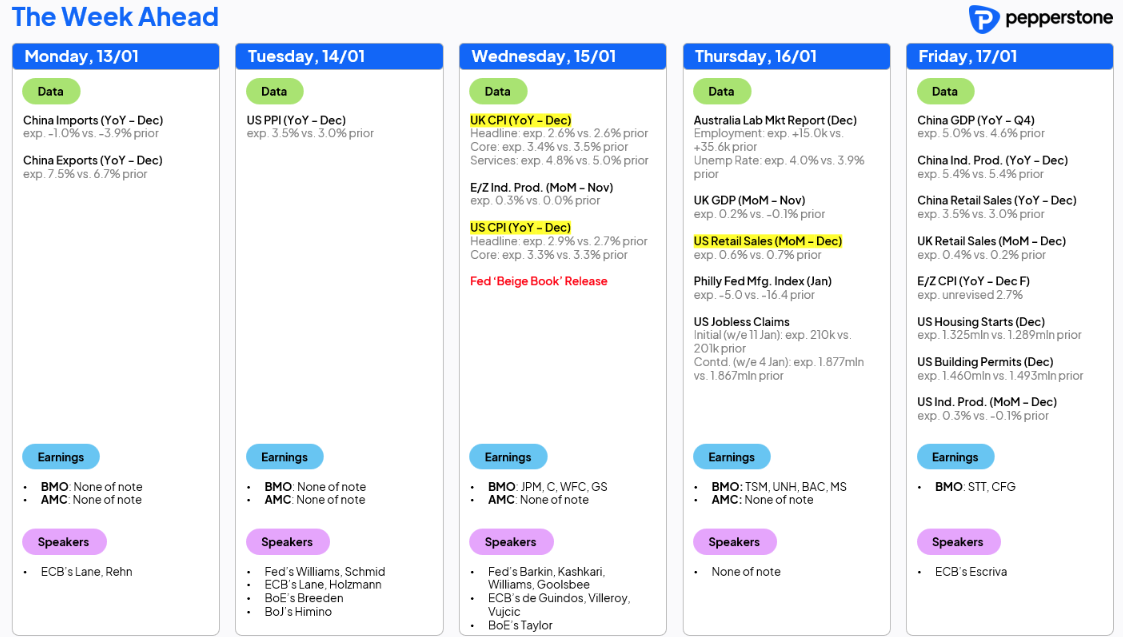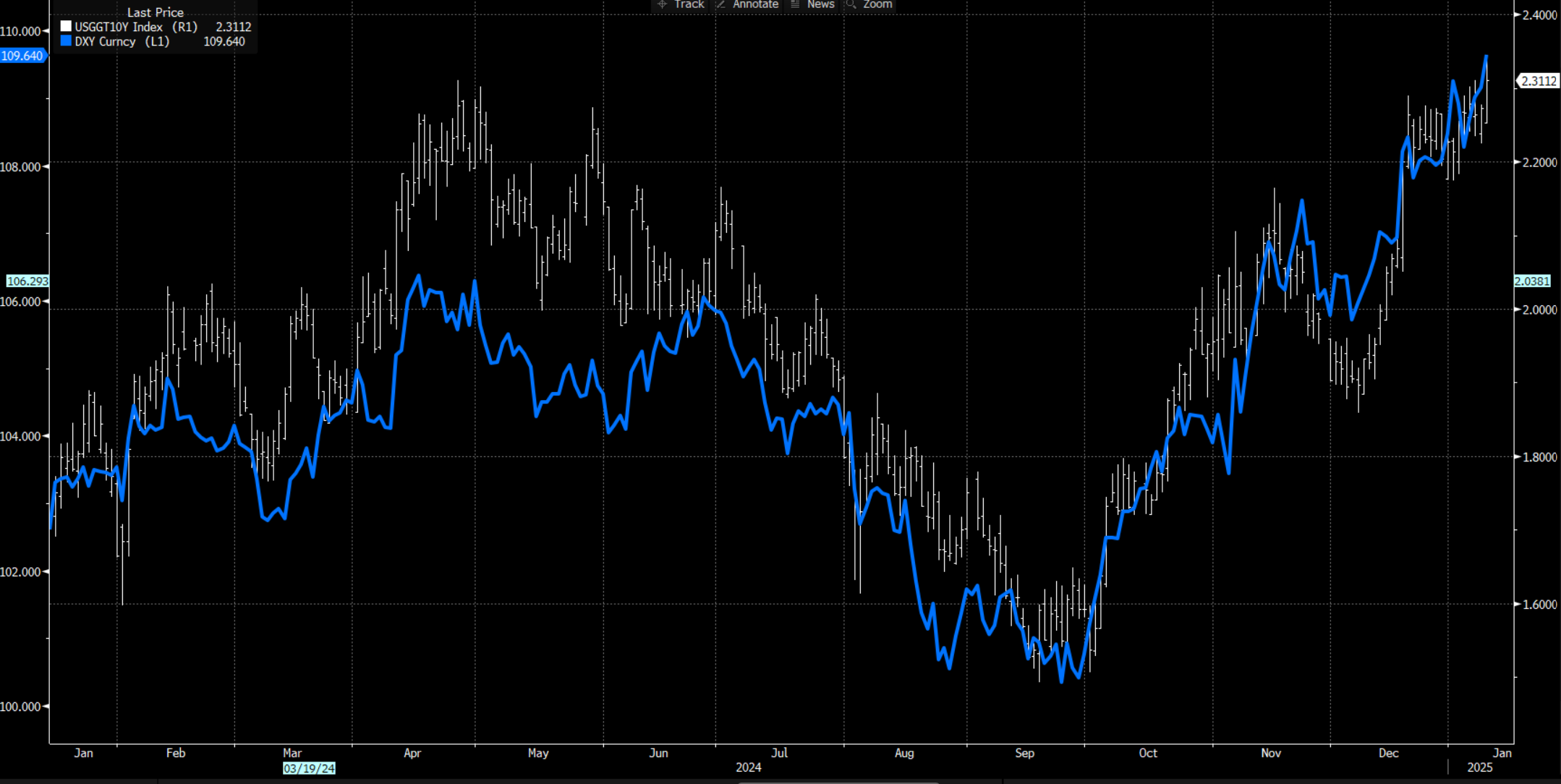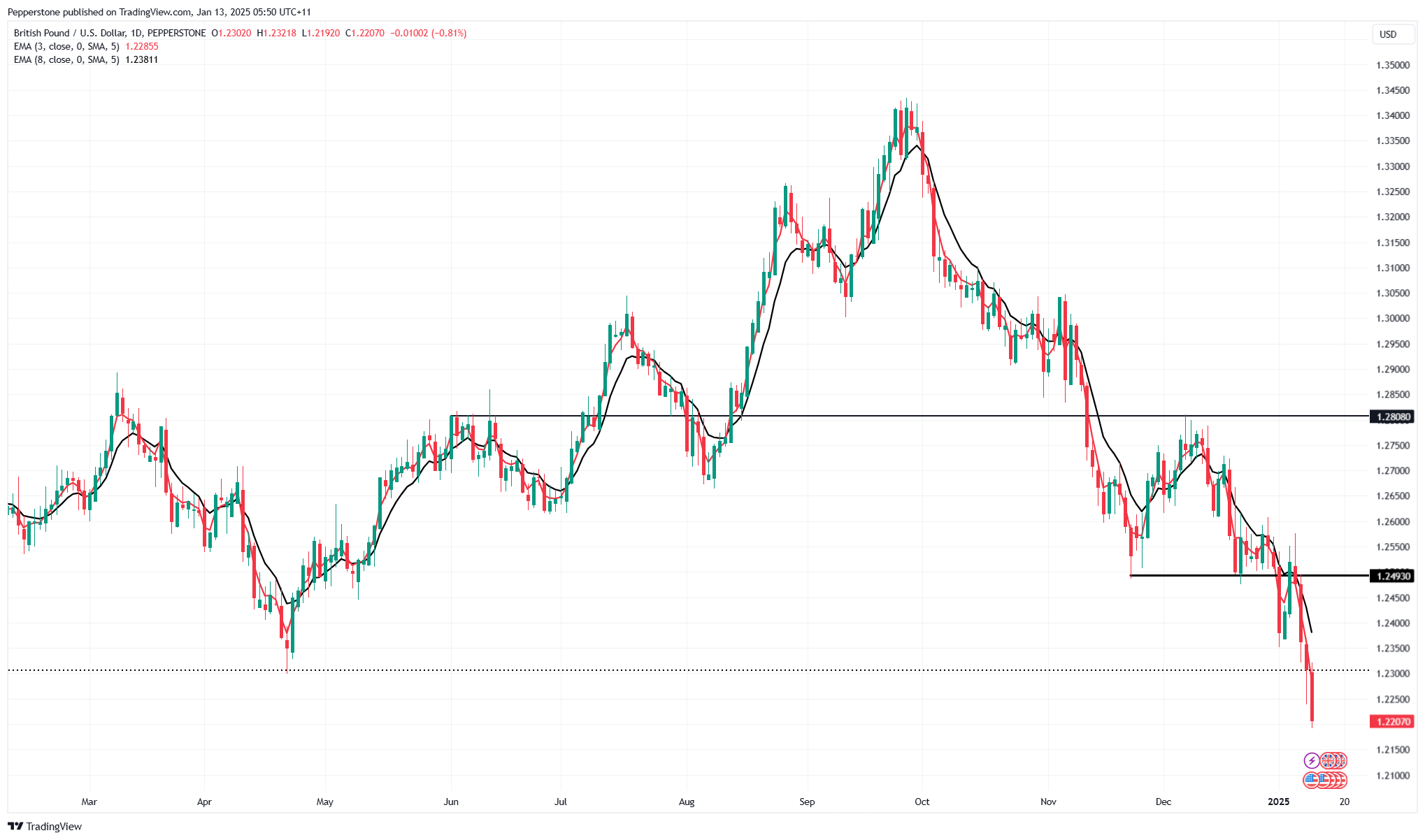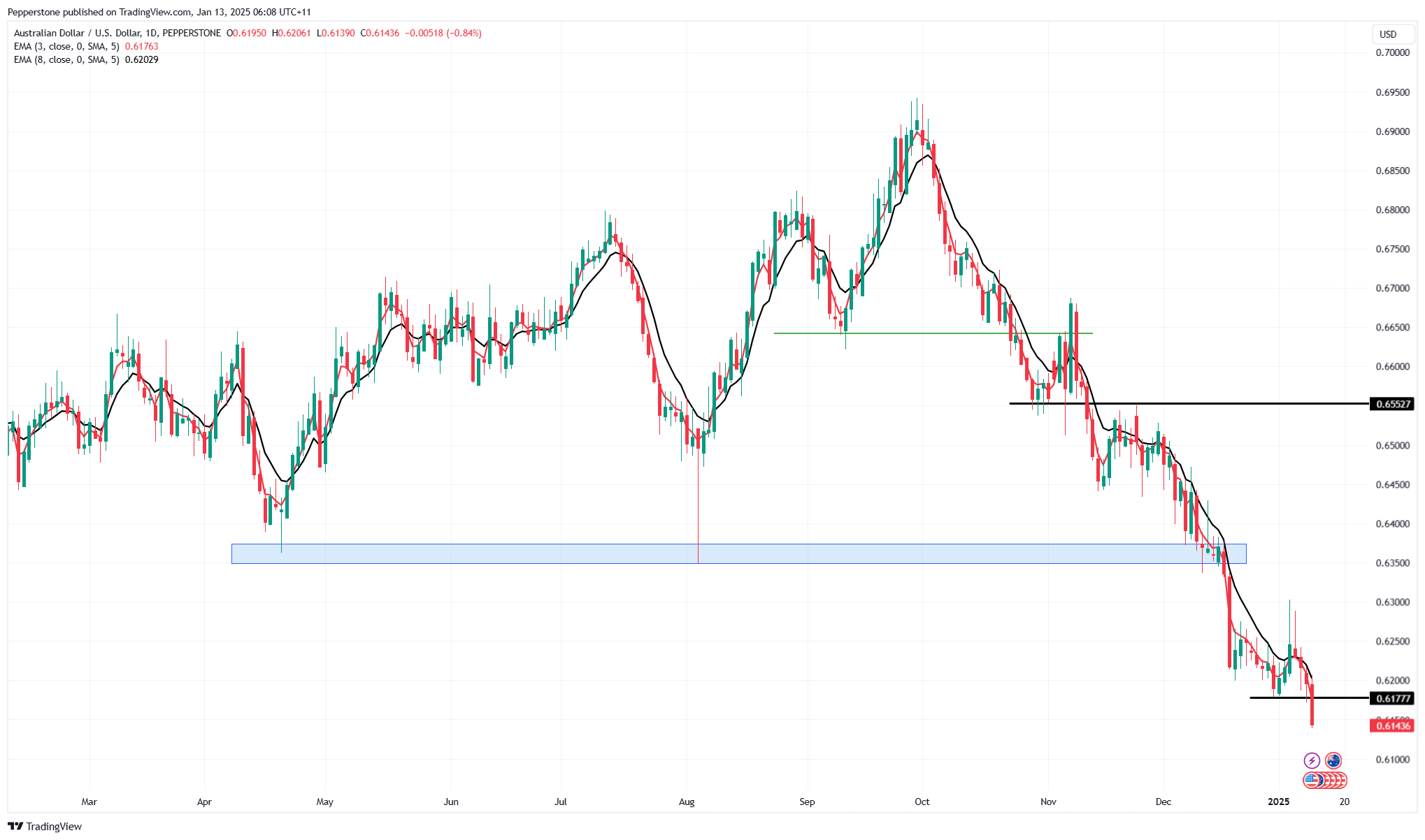CFDs are complex instruments and come with a high risk of losing money rapidly due to leverage. 80% of retail investor accounts lose money when trading CFDs with this provider. You should consider whether you understand how CFDs work and whether you can afford to take the high risk of losing your money.
- English
- 简体中文
- 繁体中文
- ไทย
- Tiếng Việt
- Español
- Português
- لغة عربية
US Economic Data Impact: Market Shifts, USD Strength, and Key CPI Risks Ahead


In the wake of the impressive US ISM services, Jolts, jobless claims and nonfarm payrolls reports, we head into the new trading week with US interest rate swaps pushing the next full 25bp cut (from the Fed) out to October, and with just one 25bp cut discounted by year-end.
US real rates impacting equity sentiment and driving USD flows
US 10-year real rates (i.e. the US 10-year Treasury yield adjusted for expected inflation) have pushed up to 2.31% - the highest level since Nov 2023. This higher real cost of capital and tighter financial conditions is rarely an easy pill for equity investors to swallow, so a further kick higher (in US real rates) this week, especially if the rally in crude also builds, will likely result in further equity downside, increased volatility, and USD buyers.
Historically, the cure for higher rates is typically higher rates, especially if the absolute level and the rate of change starts to impact market confidence and lifts cross-asset volatility to more extreme levels – so, in theory, the higher real return in Treasures (USTs) may soon become compelling to the multi-asset investor, and it's also interesting to see four consecutive days of fund inflows into the TLT ETF.
US CPI is the marquee data risk this week
Some of the braver souls may well start to look more intently at having a nibble at USTs with yields at current levels - so should this play out and we see consolidation, then perhaps USD longs may also take length down. However, it’s hard to buy into USTs and to increase one’s duration risk with US PPI, CPI and retail sales all due out this week. Certainly, the US CPI print (due out on Wednesday) is a sizeable risk event for broad markets. If US equity was sold last week on better growth and labour data, then we could see even greater volatility if realised inflation risk kicks up, and should we see core CPI rising from its current rate of 3.3%.
Recall the median estimate in the Fed’s recent Statement of Economic Projection (SEP) was for core PCE inflation to come in at 2.8% in December - so should the elements from this week’s US PPI and CPI reports feed into a higher implied core PCE tracking rate (due on 31 January), then the Fed's median 2.8% estimate would likely be seen as lowball and would justify the central pricing for just one rate cut this year – in fact, we may even start to hear increased talk of rate hike risk later this year - a point where the contrarian in me would feel Treasuries become a tactical buy and to position for increased rate cuts to start to be re-priced.
What can derail the USD rally?

The rise in US real rates and the repricing of the US interest rate swaps curve has been a clear tailwind for the USD, and the greenback is undoubtedly finding love from all circles within the FX ecosystem. On Friday we saw technical USD bullish breakouts vs the CHF, SEK, AUD, GBP, and NZD. That said, the downside in EURUSD still needs work to convince and requires a concerted push below the prior lows of 1.0224. USDCAD needs the buyers to step up for a push above the range highs of 1.4450, but I’d be looking for that to materialise should we see a hotter US core CPI print.
Many question what stops the USD from climbing further higher, however, the reality is that on current trends, we look around the G10 currency region and see a scarcity of attractive alternatives. The USD offers carry, relative growth, a hedge from looming tariff risk, and importantly it has momentum and trend working in its favour.
What derails the USD bull trend structurally would be improved economic data from other nations, and/or the upcoming US growth and inflation data starting to crack and deteriorate – a seemingly low risk at this point, but it is feasible from late Q125. Tactically, the near-term risk for USD longs – other than a below consensus US core CPI and retail sales print – is positioning, with the USD now well-owned by real money accounts, and to a lesser extent leveraged players.
The JPY is the possible exception and does hold some attractive characteristics, especially if cross-asset vol rises and carry is part unwound. As such, we’ve seen shorts covering through the week, with a renewed focus from market players on stronger Japanese wage data, with local press talking up the prospect of a rate hike at the upcoming BoJ meeting (on 24 January). Playing JPY strength seems more compelling vs the G10 FX cross rates than against the USD, and in particular vs CHF and GBP.
All roads seemingly lead to a weaker GBP
GBP gets a key further focus from traders this week, especially with so much negativity aimed at the pound, which has kept the big buyers away. Most have noted the obvious inverse relationship between the GBP and that of rising gilt yields. This is a dynamic that highlights that while the carry on offer is increasing, the mix of deteriorating UK economic activity, sticky inflation and minimal confidence in the UK’s fiscal position with tax hikes now all but assured, that the carry is of an increasingly poor quality, with the rising cost of capital only set to slow UK economic activity further.
It feels like all roads lead to a lower GBP, and rallies should be contained and swiftly sold. The incoming UK data this week offers sizeable risk for GBP traders, with CPI, monthly GDP and retail sales in play, while the UK Treasury will issue GBP4b of 10-year bonds.

Clients are now skewed long of GBP and looking for a tactical counter rally – they’d want to see a sizeable fall in UK core CPI and solid demand in the 10-year auction. However, the risk of another poor bond auction, the outcome of which would only push UK gilt yields further higher, keeps me cautious as UK risk remains high, and I'd expect GBPUSD 1-week implied volatility to rise from its current levels of 10.81%.
China ramps up its level of concern halting bond trading
USDCNH is also one to watch, with the buyers in control and wanting a further push above 7.3700. News that the PBoC suspended trading in its government bond market—with a view that this action will limit capital outflows and stabilise the yuan—is a radical step for any central bank to take and shows a growing level of discomfort in the one-way trend in the yuan.
It is also another reason that will see international investors refrain from looking seriously at putting capital to work in China. We’ll hear more on the suspension through the week, while we also navigate China’s December trade data, home prices, Q4 GDP, retail sales, property investment data and credit stats.
Australia’s (Dec) employment data a risk event to monitor
AUD and AUS200 traders will be eyeing China data through the week, as there are signs the Chinese economy is responded positively to the recent stimulus measures, and copper and iron ore futures have started to turn higher - with the weaker AUD in play, this makes ASX200 large-cap materials plays quite interesting this week.
Thursday’s Aussie employment data, where the median estimate (from economists) calls for 15k net jobs to have been created in December, and the unemployment rate eyed to tick up to 4% (from 3.9%). Aussie swaps traders already hold a high conviction of a cut at the February RBA meeting, with the Q4 CPI print (due 29 Jan) the likely key decider of that action. The form guide does suggest a greater chance of an upside surprise in this week’s jobs report, with 7 of the past 8 reports beating consensus expectations. That said, I think we’d need to see a blowout number to really derail calls for a Feb rate cut.

AUDUSD is more of a USD play though, although the AUD did underperform G10 FX last week, and only made ground against the GBP. For all the worry about what the move lower in the AUD means for imported inflation and the economy, we’re currently not seeing the markets pricing of expected future inflation really moving higher and is certainly not becoming unanchored - subsequently, any talk of the RBA acting to stem the currency weakness is highly premature.
US equity to be impacted by Q424 earnings
In equity markets, for those drawn to the weak, it’s the CN50 and HK indices that have been breaking big support levels, with the drawdown seen since the 7 October highs closing in on 20% and the technical definition of bear market territory. The prospect that local banks will be asked to support equity is an increasing risk for those looking to chase these markets lower.
US equity will continue to watch moves in the US Treasury market, with traders keen to optimise positioning and volatility hedges ahead of Wednesday’s CPI print. With this being something of a make-or-break week for equity, I see the risk in S&P500 futures as defined by the 50-day MA (5979) and the 20 Dec low of 5800. While on the upside, longs would want to see a break of 6068 with the VIX lower to 15% to feel more confident in their position.
Interest-sensitive plays will be closely watched with homebuilders (XHB ETF) and US regional banks (KRE ETF) breaking down and getting increasing attention from the short sellers. US Q424 earnings will also start to play a more dominant role in driving volatility at a single stock and index level, with JP Morgan, Goldman Sachs, Wells Fargo, Blackrock and Citi all reporting on Wednesday, with their numbers and guidance likely setting the tone for risk.
Good luck to all.
The material provided here has not been prepared in accordance with legal requirements designed to promote the independence of investment research and as such is considered to be a marketing communication. Whilst it is not subject to any prohibition on dealing ahead of the dissemination of investment research we will not seek to take any advantage before providing it to our clients.
Pepperstone doesn’t represent that the material provided here is accurate, current or complete, and therefore shouldn’t be relied upon as such. The information, whether from a third party or not, isn’t to be considered as a recommendation; or an offer to buy or sell; or the solicitation of an offer to buy or sell any security, financial product or instrument; or to participate in any particular trading strategy. It does not take into account readers’ financial situation or investment objectives. We advise any readers of this content to seek their own advice. Without the approval of Pepperstone, reproduction or redistribution of this information isn’t permitted.